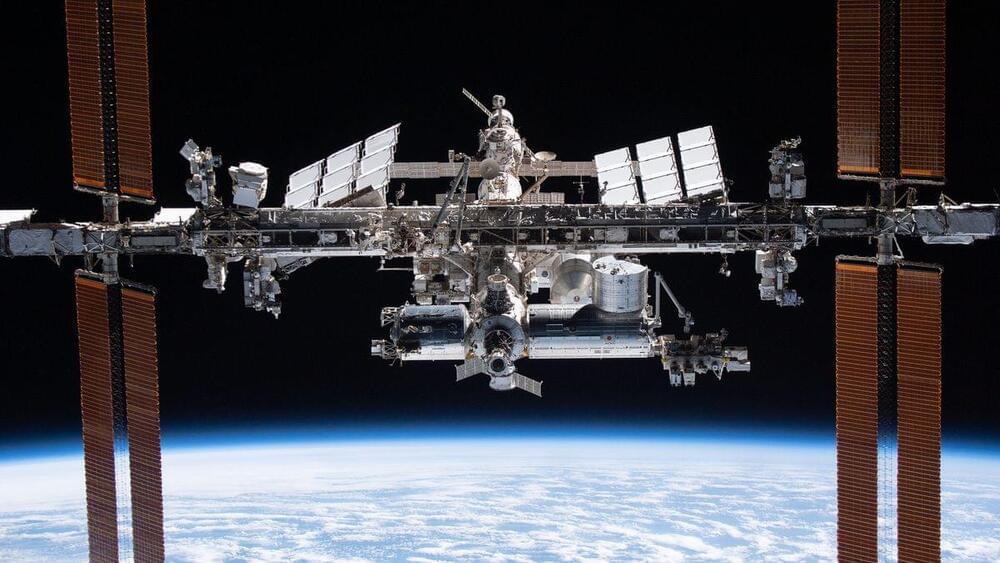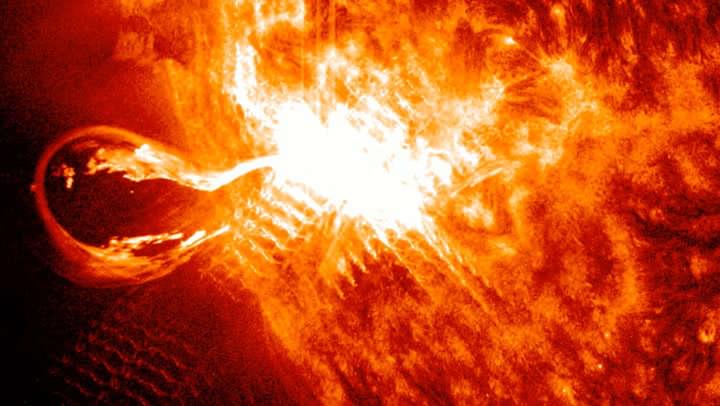The data from the reboost, scheduled for Nov. 8, will help inform design for a larger Dragon to deorbit the ISS.



“The circumgalactic medium plays a huge role in that cycling of that gas. So, being able to understand what the CGM looks like around galaxies of different types — ones that are star-forming, those that are no longer star-forming, and those that are transitioning between the two — we can observe [how] changes in this reservoir may actually be driving the changes in the galaxy itself.”
As technology evolves astronomers will likely be able to look at the CGM of other more distant galaxies and learn more about them as well.
The colliding of galaxies sounds terrifying.

New science experiments and research samples, delivered on Tuesday by the SpaceX Dragon cargo spacecraft, were installed on Wednesday on the International Space Station (ISS). Meanwhile, science activities and lab maintenance continue to support the smooth operation of the orbital outpost.
Crew Begins Unloading and Installation
The four NASA astronauts representing the Expedition 72 crew, including Flight Engineers Don Pettit, Nick Hague, and Butch Wilmore, as well as Commander Suni Williams, spent the day unloading Dragon’s research-packed cargo. Arriving on November 5, Dragon brought advanced research equipment and temperature-sensitive specimens, which the crew quickly transferred to the ISS, placing them in dedicated research racks and cold storage for upcoming experiments.

NASA’s Juno spacecraft has just completed its 66th flyby of Jupiter, and the latest batch of images it has sent back to Earth are truly spectacular.
The spacecraft was launched back in 2011, reaching Jupiter five years later in 2016 after journeying for 1.7 billion miles. Ever since then, the probe has been zipping past Jupiter and its moons, capturing images and sending back data bursting with exquisite details.
“Jupiter is the Rosetta Stone of our solar system. Juno is going there as our emissary—to interpret what Jupiter has to say,” Scott Bolton, Juno’s principal investigator, said in a statement on NASA’s website.

In an incredible feat that redefines biological boundaries, scientists have successfully engineered animal cells capable of photosynthesis.
This breakthrough, led by Professor Sachihiro Matsunaga at the University of Tokyo, could transform medical research and aid in advancing lab-grown meat production.
Photosynthesis, traditionally exclusive to plants, algae, and certain bacteria, is a process that uses sunlight, water, and carbon dioxide to produce oxygen and sugars – essentially “feeding” the organism.

There have been some laboratory experiments and theoretical work done to validate aspects of the plasma magnet propulsion concept. The Plasma Magnet is a wind drag device invented almost twenty years ago by Dr. John Slough from the University of Washington. A rocket that uses a propellant to create momentum. A plasma magnet (newer / Wind Rider design) uses the pressure of the solar wind to gather momentum. This type of propulsion actually exists in nature. A dandelion coasts upon the wind to its ultimate destination.
The plasma magnet drive with dynamic soaring is a system that could be plausibly scaled for human crewed missions up to 2–3% of light speed without needing gigawatt power systems. It seems one of the systems with the fewest technological challenges. There are many other proposals to get to this speed.

Between 1.8 billion and 800 million years ago, earthly life was in the doldrums. During this period, called the “boring billion,” the complexity of life remained minimal, dominated by single-celled organisms with only sporadic ventures into multicellular forms. This era set the stage for the later emergence of complex multicellular life, marking a key chapter in evolutionary history.

Chat.com now redirects to ChatGPT.
Health Innovation For Prevention And Precision At Scale — Dr. Päivi Sillanaukee, MD, Ph.D. — Special Envoy, Health & Wellbeing, Ministry of Social Affairs and Health Finland.
Dr. Päivi Sillanaukee, MD, Ph.D. is Special Envoy for Health and Wellbeing, Ministry of Social Affairs and Health Finland (https://stm.fi/en/rdi-growth-programm…).
Dr. Sillanaukee has over 20 years of experience at highest civil servant administrative positions, both from government, including roles as Director General at Ministry of Social Affairs and Health, Ambassador for Health and Wellbeing at the Ministry for Foreign Affairs, as well as various additional roles in the public sector at the Municipalities and Special Health care district levels.
Actively participating also in Global Health, Dr. Sillanaukee has chaired and facilitated global multisectoral, multi-partner Health Security collaborations, facilitating capacity building at the country level. She served as Vice chair and member of WHO Executive Board, as Executive President for WHO/Europe Regional Committee, Member of Women in Global Health advocating for Gender Equity in Health, a member of Global Pulse Finland’s health sector advisory board, as Member of Board of Directors, Healthcare Information and Management Systems Society (HIMSS) and Member of the Inaugural Board of Digital Health \& AI Research Collaborative (I-DAIR).
Dr. Sillanaukee has also served as the co-chair of the Alliance for Health Security Cooperation (AHSC) and a member of the Steering Group of the Global Health Security Agenda.

Using functional magnetic resonance imaging (fMRI) data, the research team identified 24 networks with different functions,…
MIT researchers created the most comprehensive map yet of the functions of the brain’s cerebral cortex. Using fMRI, the team identified 24 networks with different functions, which include processing language, social interactions, visual features, and other sensory input.